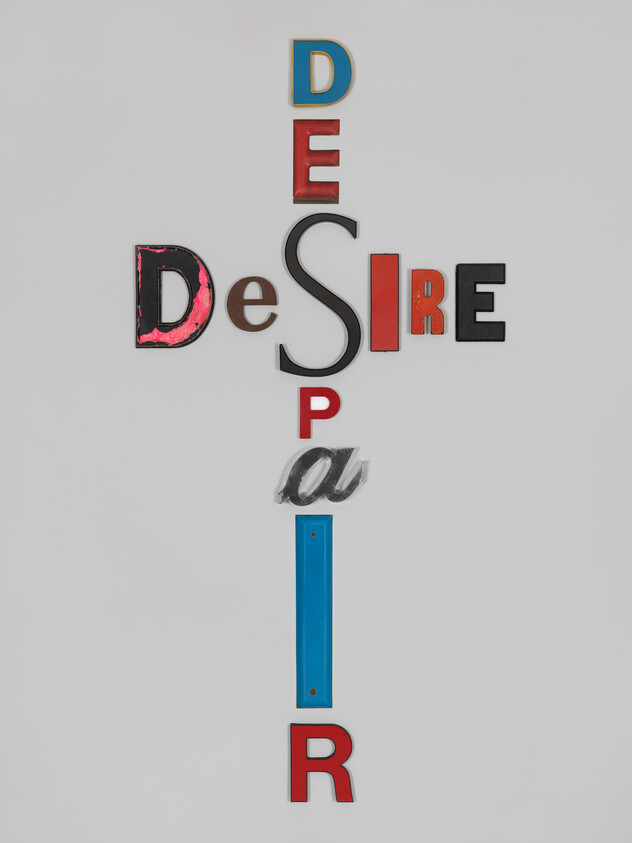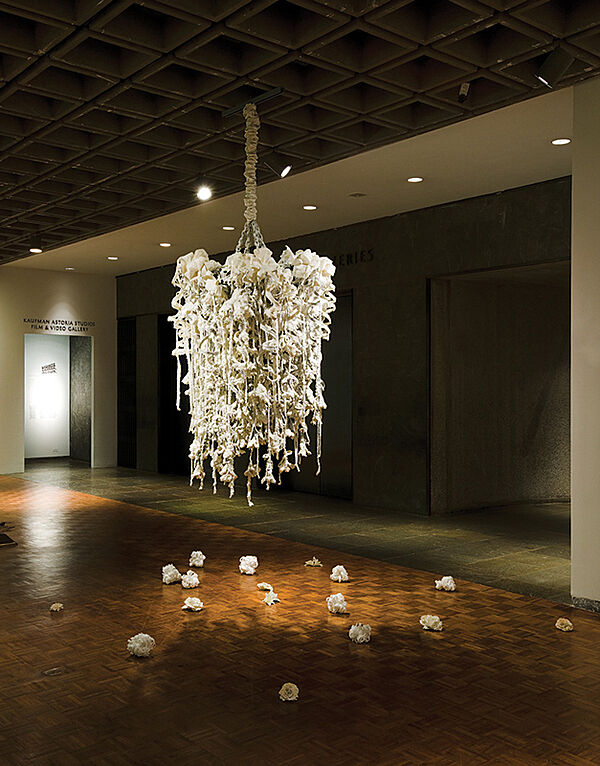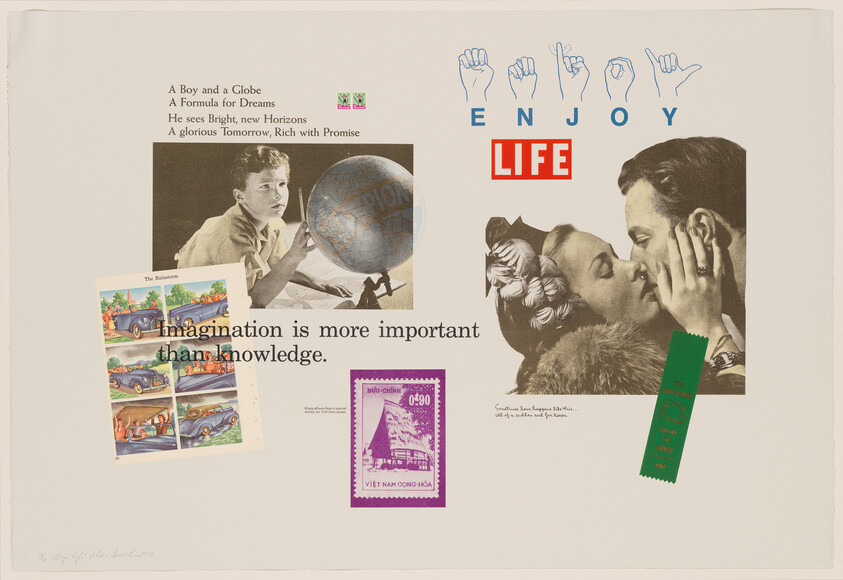Desire, Despair. The simple juxtaposition of these two intersecting words forms the basis of Jack Pierson’s cruciform-shaped sculpture. In his work, Pierson uses ready-made objects to explore the pathos underlying the American dream—a pathos embodied in the mismatched metal, plastic, and wood letters of old movie marquees and salvaged commercial signs from which his sculptures are created. Pierson scavenges the letters from sites across the country; the “I” that appears in this work, for example, was found on a trip to Kentucky, and the “S” reclaimed from a now-defunct signage company in Pasadena, California. Through this aesthetic recycling, Pierson points to the throwaway quality of America’s consumer culture. By mobilizing found letters to evoke discarded dreams whose original purpose has been long forgotten, Desire, Despair recalls Walker Evans’s photographs of torn billboards, which summon the lost hopes of modern society, or Edward Hopper’s paintings of half-deserted cinemas, with their poignant mood of loneliness and alienation. Many viewers have also found in Pierson’s elegiac tone a more contemporary reference: to the AIDS epidemic, which brought the era of liberation inaugurated by the sexual revolution of the 1960s to an abrupt and tragic halt.
Not on view
Date
1996
Classification
Sculpture
Medium
Metal, plastic, plexiglass and wood
Dimensions
Overall: 117 1/2 × 56 1/4 in. (298.5 × 142.9 cm)
Accession number
97.102.2a-l
Credit line
Purchase, with funds from the Painting and Sculpture Committee
Rights and reproductions
© artist or artist's estate




